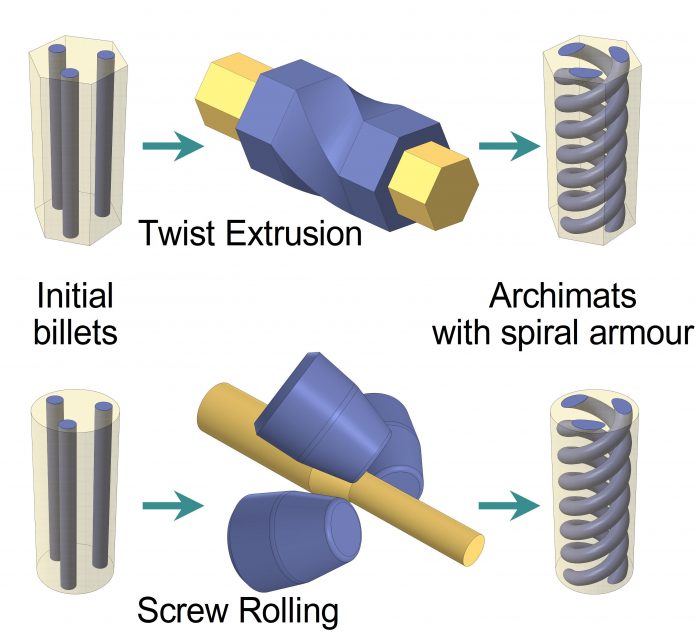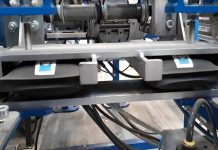
Media Release
A global research team, headed by Monash University, is pioneering a breakthrough recyclable material that could revolutionise the construction industry, assist disaster-affected areas, and become used in space exploration.
Researchers are leading the development of archimats – an emerging area of ‘architectured’ materials that have an organised intertwined or interlocked inner architecture. As a result, archimats have an extra degree of freedom expanding the design space that conventional composite materials, such as concrete, cannot possess.
Archimats can be engineered to have superior strength, enhanced ductility, a high tolerance to damage, good thermal insulation and sound absorption. They can also better absorb energy, as well as provide improved compliance and flexibility.
One way to achieve this superior property profile, especially of metallic materials, is through severe plastic deformation (SPD) – a special metalworking technique that results in an ultrafine grain size or nanocrystalline structure. The structural patterns caused by SPD processing can improve the mechanical characteristics and physical properties of materials.
With the potential to revolutionise the construction, materials and production industries, archimats can be used:
- In the construction industry to reduce the use of concrete and cut carbon dioxide emissions associated with its production;
- To build or rebuild in arid or disaster-affected zones. This includes rapidly deployable and removable structures in danger areas, such as a town or city impacted by fire, for first responders and displaced citizens;
- In extra-terrestrial and space construction. The European Space Agency is already considering this type of architectured material for the construction of a lunar base; and
- In smart toys and games, such as 2D and 3D puzzles.
Professor Yuri Estrin, an Honorary Professorial Fellow in Monash University’s Department of Materials Science and Engineering, leads this project. Professor Estrin is a Fellow of the Australian Academy of Science and an internationally recognised authority in the field of materials science and engineering, nanomaterials and the design of geometry-inspired novel materials.
He said a further benefit of archimats is the ease of assembly and disassembly it provides a structure, as well as the nearly full recyclability of the elements involved.
“Archimats therefore offer smarter, safer and more sustainable materials for use in manufacturing and industrial design, with the building industry being arguably the greatest potential beneficiary of this design concept,” Professor Estrin said.
“Archimats are also suitable for micro manufacturing. They can be produced using desktop or benchtop manufacturing processes, without the need for heavy equipment and large amounts of material.
“This opens up new possibilities for industry to explore the use of archimats for application in smart manufacturing, in particular the development of gear for microelectromechanical systems, micro devices and miniaturised drones, as well as superior structural materials for the automotive and aerospace industries.”
Professor Estrin has been invited to contribute a review of his research, titled: ‘Design of Architectured Materials Based on Mechanically?Driven Structural and Compositional Patterning’ to the prestigious Hall of Fame edition of the journal Advanced Engineering Materials. This study has been one of the most read across the world in the past 12 months.
A monograph he co-edited, entitled ‘Architectured Materials in Nature and Engineering’ and recently released by Springer (https://www.springer.com/gp/book/9783030119416), defines this emerging research area and provides useful and entertaining reading for experts and interested general public alike.
Image Provided



















